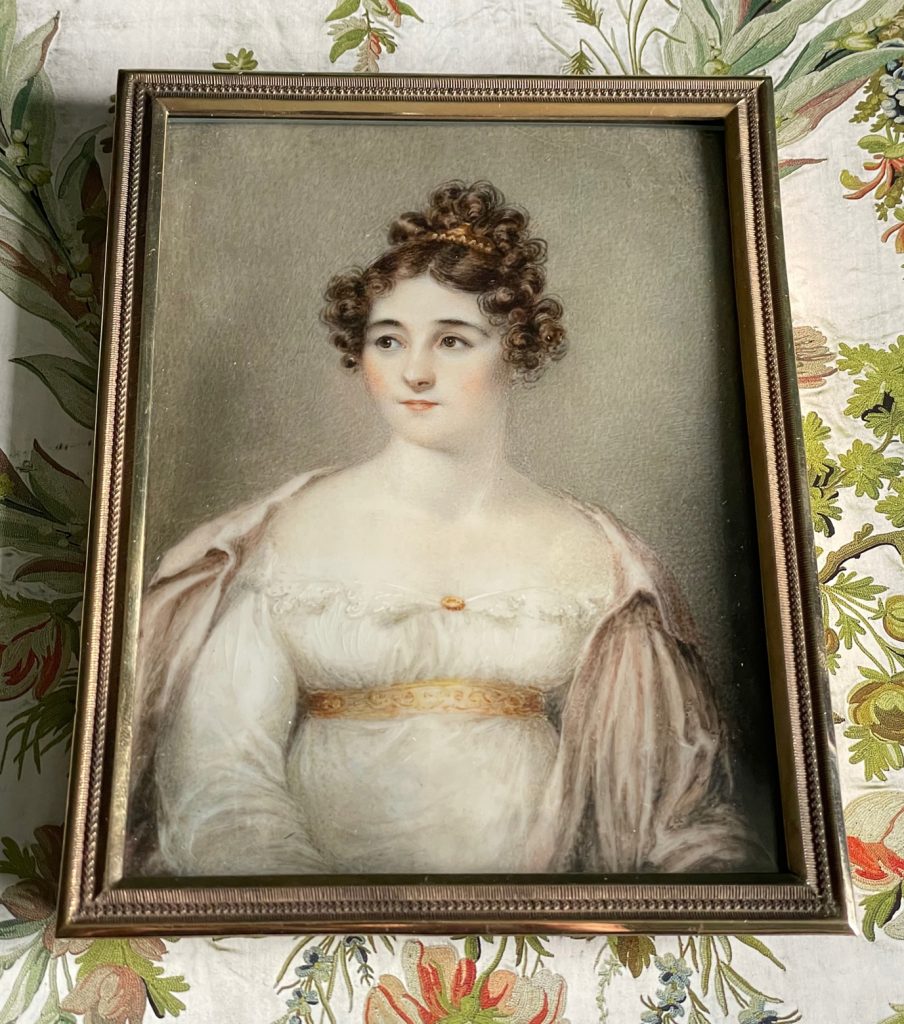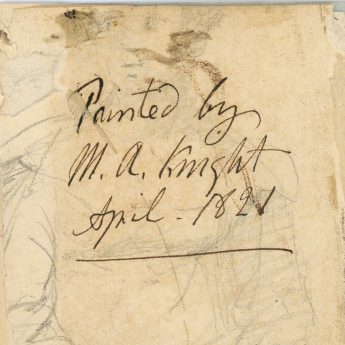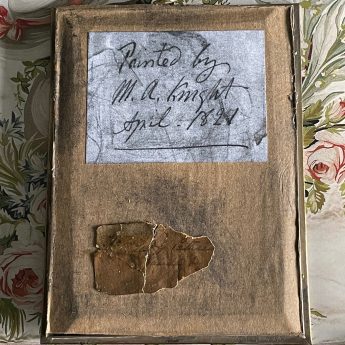
Lady Catherine Sarah Elliot
Portrait miniatures, silhouettes, portraits & an omnium-gatherum of historical interest & character.
Enquiries and orders
Lady Catherine Sarah Elliot
Mary Ann Knight
Sold
When this portrait was painted by Mary Ann Knight in 1821 the Regency period had officially ended as George IV had by then been crowned King following the death of his father in 1820. Regency as a style continued though as seen by this lady’s dress that is fastened on the high waistline with a decorative gold band. Draped over her shoulders is a taupe surcoat with wide sleeves; her hair fashionably curled is swept up and secured with a large comb.
The portrait is signed reverse over an interesting pencil sketch of a gentleman ‘Painted by / M. A. Knight / April 1821’. It is presented in a later gilt metal frame with a fragment of an old handwritten label attached.
The sitter is 24-year old Lady Catherine Elliot (1797-1862). Catherine Sarah was born into an aristocratic Scottish family, her parents being Gilbert Elliot-Murray Kynynmound, 1st Earl of Minto and his wife Anna Maria Amyand. Her father was a career diplomat and politician who held the position of Governor-General of India between 1806 and 1813. Aged 28 in 1825, Catherine married Sir John Peter Boileau, 1st Baronet of Talconeston Hall in Norfolk. Boileau was an archaeologist, a fellow of the Royal Society with prominent positions in several similar societies. The couple had a large family together of five daughters and four sons and travelled extensively – one son was born in Geneva.
An anecdote tells how one day whilst Lady Catherine was out walking she encountered an elderly lady who, when Lady Catherine passed the time of day with her, lamented how dreadful it was that Queen Victoria had ordered all children under five to be killed, even including the Queen’s own children! Astonished Lady Catherine went on to discover that this belief was widely held. Upon investigation though it transpired that Queen Victoria had ordered all the children to be vaccinated starting with her own children. No one, however, understood this new-fangled concept!
Lady Catherine is said to have had a delicate constitution so much so that her husband, believing her at one point to be at death’s door, made extensive (but secret) arrangements to have the crypt in the local Church cleared of all coffins to create a suitable final resting place for his wife. This did not go down at all well with the locals and so the arrangements had to be reversed at great expense and a new Mausoleum hastily designed and built. In the event Lady Catherine recovered from her illness and went on to live another decade.
The artist Mary Ann Knight (1776-1851) took up painting to help her family financially. She had painting lessons from the miniature painter Andrew Plimer who was to become her brother-in-law when he later married her sister Joanna. Mary Ann exhibited at the Royal Academy between 1803 and 1836. In her Accounts Book, Mary Ann records that she was paid £10 10s for the portrait of Lady C. Elliott in 1821.
Item Ref. 7394
Size: framed, 135 x 102mm
Literature: Andrew and Nathaniel Plimer / George C. Williamson (1903) p.146

